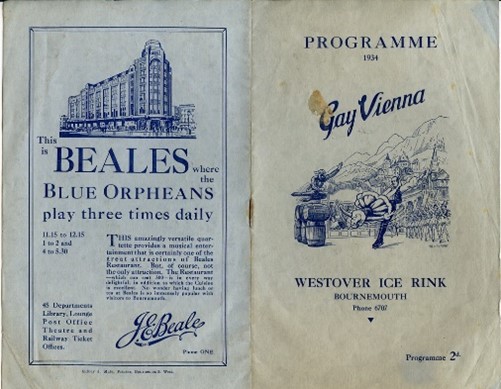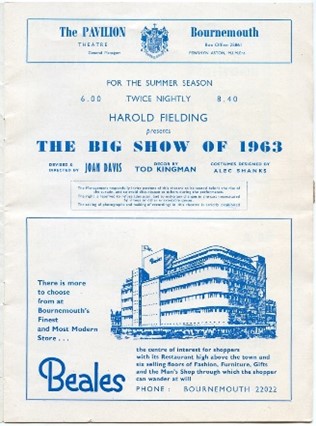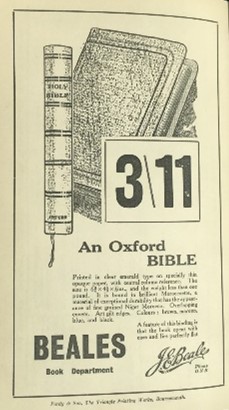The administration of Beales – How the lack of modernisation in department stores led to their closure
Beales went into administration on the 20th of January 2020. Its consistent structure since the department store’s founding in 1880 meant the lack of change in both style and sales pitch left the business to age with their target audience. The rise of internet shopping gave rise to a generation that could be contrasted against previous consumers due to their wider access to white goods and other non-essential products.
Many other department stores have experienced the same financial and social issues that Beales has faced. Bhs closed halfway through 2016, and COVID-19 measures applied recently have brought larger department stores like Debenhams and House of Fraser to an economic stand-still.
So, this project aims to bring light to the reasons department stores have closed by looking at their development; emphasising the lack of change that has occurred throughout the 20th century. Beales (whose events take place mostly in Bournemouth town) will be used as the primary case study for researching the advancements of department stores. Inevitably, the administration of Beales was due to their inability to reform to a new consumer society that placed speed of purchase and price over customer service.
When the Fancy Fair and Oriental house opened in 1881, their main attraction were exotic and commercial items that could only be found in department stores. The wide range of consumer items that Beales offered gave the public access to so many different categories of items that department stores had the diversity that modern internet shopping provides.
Department stores (including Beales) took part in many events to draw customers into their stores and to exert their influence in Bournemouth. Holding seasonal and product-based events was considered part of the service that department stores were expected to offer. A photo of Father Christmas on his way to Beales in 1909 shows the amount of public support parades received in the early 20th century.
As shown in the 1934 advertisement for Blue Orpheans, Beales would encourage and promote entertainment that has no affiliation with consumer sales. This added to the display if attractions and purchasable goods that would lead to department stores becoming the central attraction of Bournemouth until the Second World War, when the Beales flagship store in Bournemouth was hit by a bomb during an air raid in 1943.

Beales reopened in 1952 once repairs to the bombed building were finished. For the most part, Beales continued to operate as an early 20th century department store. Architecturally, the building reflected the era of reconstruction. However, operations remained similar to the past 50 years of sales. A 1963 advert for the Pavilion Theatre provides evidence for the lack of change, as its design is similar to advertisements in the St Peter’s Parish Magazine for the Oxford Bible from 1931.


Furthermore, the 1963 advertisement refers to a shopping restaurant, which Beales operated into the 21st century. This is an example of extreme customer service that would not be expected in modern retail, which was suitable for the early 20th century.
Certain aspects of the earlier days of Beales had disappeared from consumer society. Throughout the 1960s, department store parades ceased to continue, including the annual Christmas Parade. Even though Beales would continue to hold Christmas events, the change in their agenda is one of the examples of a decreased public interest in department stores, as many so-called exotic goods became readily available through different outlets.
The rise of internet shopping on a large scale led to a change in consumer demand. Customers no longer needed to leave the house to purchase goods, and the rise of platforms such as eBay, along with second-hand shopping meant that from 1996 designer brands could be bought a fraction of department store prices. This, along with rising store rent prices, led to a decline in retail profit, which meant that public events were no longer profitable.
An interview with a retail manager who was working with Beales near and during their administration explains that Beales was struggling to cope with prices that were much lower than department store offers, and would often barter against internet prices.
Beales entered administration in January. The news hit national newspapers, with the claim that Beales went into administration due to rent prices and a change in retail demands.
By the 21st century, Beales was still offering items that could be found online, which meant that their unique market was no longer relevant. With the ability to buy online, shoppers were no longer looking for a shopping experience. Instead, they were looking for a bargain; something Beales was unable to offer.
In conclusion, the recent administration of Beales provides an example of why department stores across the UK are struggling to make a profit. As new generations take advantage of new technology and ways of purchasing products, browsing department stores becomes unnecessary to the consumer. Beales failed to keep up with the demand for fast-paced and cheap consumer goods.
The department store’s market for new and exotic materials (which in the late 19th century came from across the British Empire) was undermined by the sale of international items online. So, even if high rent and operational prices were negated from their financial difficulties, the products that department stores offer are no longer unique. The COVID-19 pandemic has also encouraged shoppers not to go outside and browse, adding to the distress of the department store’s financial difficulties. Beales and other department stores now only stand as a reflection of early 20th century consumerism.
Sources used and further reading
Ashmore, Sonia. “‘The death of the high street’: town centres from post-war to Covid-19.” The London Journal 31, 1 (July 2006): 41-63.
Griffiths, Sam. Suburban Urbanities: Suburbs and the Life of the High Street. London: UCL Press, 2015.
Parsons, J.F. J.E. Beale and the growth of Bournemouth Part Three Business Expansion 1905-1914. Bournemouth: Bournemouth Local Studies Publications, 1982.
Portis, Bernard D. and Stuart U. Rich. “The “Imageries” of department stores.” Journal of Marketing 28, 2 (April 1964): 10-15.
Scott, Peter, James Walker. “Advertising, promotion, and the competitive advantage of interwar British department stores.” The Economic History Review 63, 4 (November 2010): 1105-1128.

